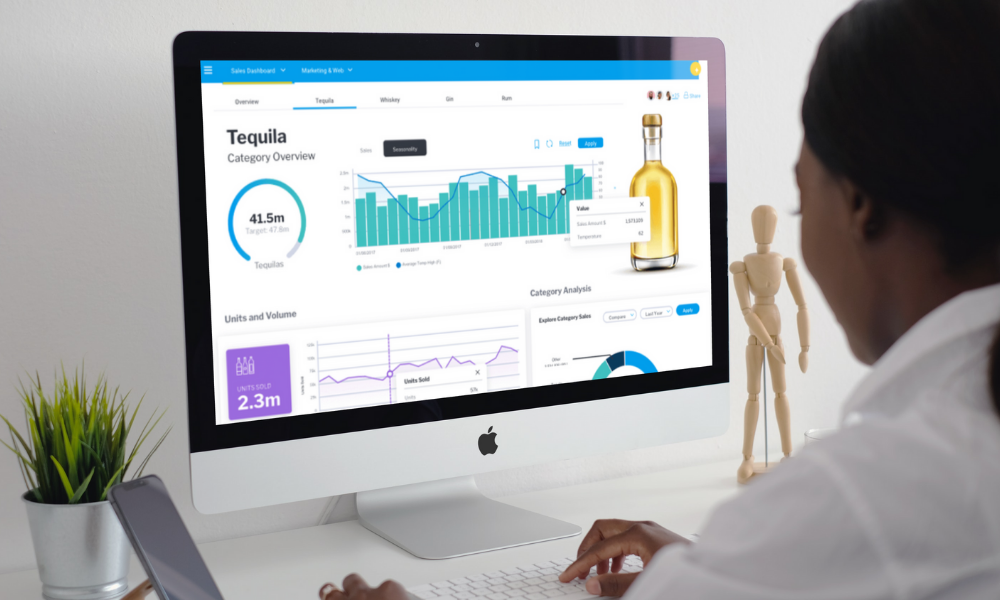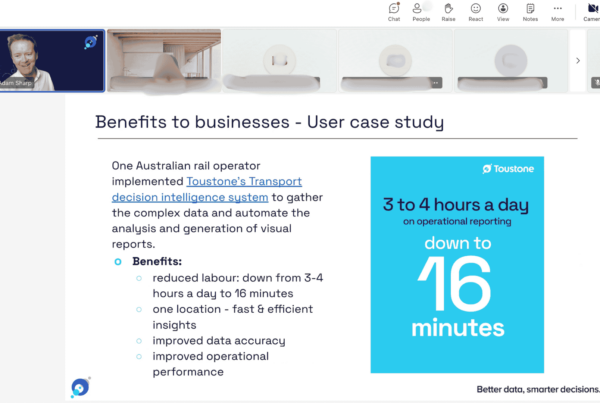We see a lot of companies that sit on a gold mine of data but don’t know how to extract its value. You may be making your best effort to use your data to gain insights, but are you getting the most out of your data?
We’ve broken down the process into four basic stages to make sure you’re using your data to its fullest extent. The four stages are:
- Building a foundation to establish that you have accurate, useful data to work with.
- Sharing your data with the appropriate staff in a secure way.
- Automated visual reporting – it’s time to let go of old habits and get everyone on board with automated visual reports.
- AI automated insights will take you to the next level of efficiency and informed decision-making.
Wondering what all of that means? Don’t worry, we put in the hard work so it’s easy for you to get the most out of your data. We’re here to guide you step by step.
1. Building a Foundation
The first step to getting the most out of your data is to build a foundation that ensures that you have accurate, useful data to work with. Here’s how to do that:
Clear the roadblocks
If you’ve got data stored in various applications, forecasting tools, Excel spreadsheets – it’s a roadblock to a clear overall look at your data, and it opens the door to errors. Identify the data required for business reporting that is key to decision making.
Automate the process
Automating the loading of data into a Data Warehouse removes the need for manual loads, saves time and ensures the data is available at the right time.
Identify dirty data and gaps
Identifying your key KPI’s helps identify dirty data and gaps. You can then go back and fix your business process to ensure you have the right data for your reporting needs. As the data flow is automated, any changes automatically flow through to your Data Warehouse.
Organise the data
This is where the right Decision Intelligence tools do the work for you. Cloud-based software with a dashboard presentation will organise your data and present it with easy-to-use visuals.
Your data foundation provides the information you need to make data-driven decisions right now. It’s critical to get it right before you build on it in the next stage.

2. Sharing your data
Once your Decision Intelligence system is in place, your data foundation is set and reporting is on a roll, it’s time to share your data with the right people to drive action. The best digital technology still relies on people to act on it.
Why sharing is crucial
The organisation as a whole needs to rely on the same data for consistent, confident decision-making. From high-level metrics down to detailed transactions, everyone views the same data – but only as much of it as they need to see. This ensures there is one single source of truth driving every decision while keeping your data secure.
Controlling access
Access to data is controlled according to each person’s role. The operations team needs to view data that allows them to do their day-to-day job, while the data scientist needs a different view to drive insights for longer-term decisions. Each person has access to data relevant to their job to enhance efficiency and focus in every department.
Informed decisions
The world doesn’t wait around while you make a decision. Automated reporting allows for access anytime and anywhere, so staff can utilise tools to collaborate and drive insights from the data in real-time. This drives efficient, informed decision-making across the organisation.
Sharing data while controlling access is key to driving informed and consistent decisions. You can say goodbye to the risky days of an employee relying on their gut instinct to make a critical decision. Everyone has the information they need to make solid data-driven decisions.

3. Automated Visual Reporting
Automated visual reporting provides instant access to current data in an easy-to-use format. It will change the way your organization works, but everyone has to be on board with it. This will change expectations for staff performance.
Take it to the cloud
Thanks to the cloud, automated visual reports are accessible anytime, anywhere. No more waiting for a weekly report when one dashboard view displays your data narrative every day. Now the bar of expectations is raised to be ready for action, not ready to prepare for action.
Automate it
Automated visual reporting drives better and faster decision-making as outliers and issues are easily visible so you can quickly drill down to the root cause. Everyone in the organisation has to commit to using automated reports – and avoid reverting to the old ways (no more clunky Excel spreadsheets). This involves a culture shift in your business as you move towards being data-driven.
Improve efficiencies
Staff must be ready to adapt to a new, streamlined way of doing things that supports instant decision-making. The time that used to be spent compiling and organizing data will now be used for decision-making. This means continually evolving with new information and insights and getting more insightful meaning out of a day’s work.
Any organisation can realise exciting advances with automated visual reporting.

4. AI and ML Automated Insights
Artificial intelligence (AI) and Machine Learning (ML) is bringing the future into the now and using it to get insights is the final stage in getting the most out of your data. With AI automated insights, data analysis is delivered to you and highlighted on your visual dashboard to make targeted, quick data-driven decisions.
Utilise AI technologies
Automated insights tell the story behind the data – what, when and why – doing the discovery work for you. AI techniques such as machine learning and natural language processing assist in delivering vital insights and predictions. Data reports become data stories, easy to understand and act on.
Meaningful insights
Having insights delivered to you means your focus can be on creating targeted responses and better data-driven decisions. No more time wasted on analysis means more time focused on action.
Get the most out of your data
Don’t let your organisation sit on a gold mine of data. Build a data foundation, share it with the right staff, use automated visual reporting and AI automated insights. You will save time and money while extracting real value from your data.


